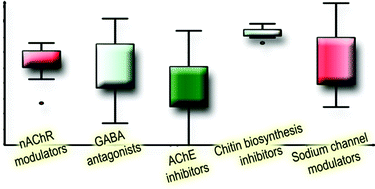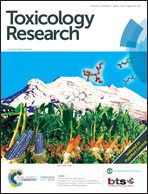Distribution of toxicity values across different species and modes of action of pesticides from PESTIMEP and PPDB databases†
Abstract
The continuous use of compounds contained in commodities such as processed food, medicines, and pesticides, demands safety measures, in particular, for those in direct contact with humans and the environment. Safety measures have evolved and regulations are now in place around the globe. In the case of pesticides, attempts have been made to use toxicological data to inform of potentially harmful compounds either across species, on different routes of exposure, or entirely new chemicals. The generation of models, based on statistical and molecular modeling studies, allows for such predictions. However, the use of these models is framed by the available data, the experimental errors, the complexity of the measurement, and the available computational algorithms, among other factors. In this work, we present the methodologies used for extrapolation across different species and routes of administration and show the appropriateness of developing predictive models of pesticides based on their type and mode of action. The analyses include comparisons based on structural characteristics and physicochemical properties. Whenever possible, the scope and limitations of the methodologies are discussed. We expect that this work will serve as a useful introductory guide of the tools employed in the toxicity assessment of agrochemical compounds.

- This article is part of the themed collection: Toxicology Research Recent HOT articles


 Please wait while we load your content...
Please wait while we load your content...